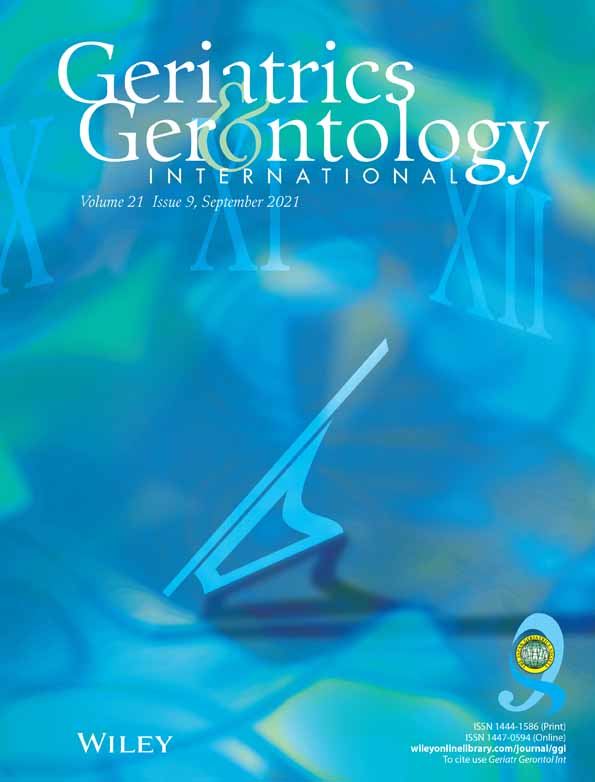Inpatient knee pain after hip fracture surgery affects gait speed in older adults: A retrospective chart-referenced study
Abstract
Aim
Post-hip fracture knee pain (PHFKP) develops in 28–37.4% of patients with hip fracture and contributes to prolonged hospitalization. Although reduced balance and gait speed contribute to falls, the effects of PHFKP remain unclear. This study aimed to clarify whether PHFKP is a factor in balance and gait speed.
Methods
We retrospectively reviewed the medical records of patients after hip fracture. Development of PHFKP, basic information, and physical function were examined. Berg balance scale (BBS) and maximum walking speed (MWS) were collected at discharge. These parameters were compared with the presence or absence of PHFKP. In addition, multiple analyses were conducted with BBS and MWS as dependent variables and PHFKP as one of the independent variables.
Results
Of the 146 patients enrolled, 43 (29.5%) developed PHFKP, and 37.2% of patients with PHFKP showed residual symptoms at discharge. Intensity of PHFKP was mostly mild to moderate. The PHFKP group showed an extended length of stay (+13.3 days) and a tendency toward more discharges to facilities compared with the control group. Knee extension range of motion limitation, knee extensor strength, and BBS did not differ between groups, while MWS was significantly lower in the PHFKP group (0.85 ± 0.32 m/s vs. 1.07 ± 0.39 m/s). Multiple analyses showed that development of PHFKP was not associated with BBS, but was associated with decreased MWS (standardized beta = −0.202, P = 0.005).
Conclusions
PHFKP was identified as an independent factor in gait speed decline. PHFKP patients should be monitored for reduced gait speed during rehabilitation. Geriatr Gerontol Int 2021; 21: 830–835.




